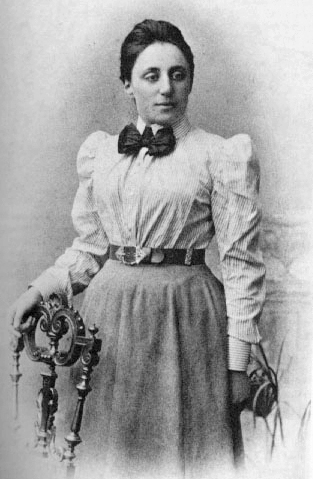Reading Time: 3 minutesI heard about Laura Bassi first at University – there is a “Laura Bassi Competence Centre of Expertise” for Visual Analytics Science and Technology at the Faculty for Informatics. Then, some weeks ago, Laura Bassi popped up in my Facebook timeline as part of the minister for education and women’s (weird combo, I know!) ongoing series on women in history, #365Frauen (#365women).
So. Laura Bas si, born on 31 October 1711 to a wealthy family, she was tutored for 7 years as a teenager. She came to the attention of the future Pope Benedict XIV, who encouraged her scientific work.
si, born on 31 October 1711 to a wealthy family, she was tutored for 7 years as a teenager. She came to the attention of the future Pope Benedict XIV, who encouraged her scientific work.
At the age of 21, she was appointed professor of anatomy at University of Bologna, and one year later given the chair of philosophy, too. After Elena Cornaro Piscopia, 45 years before, Bassi was the 2nd woman in Europe to receive a degree from a university.
The defence of her degree, awarding ceremony, and first lecture in 1732 took place in the Palazzo Pubblico, one of the most important government buildings in Bologna. They were attended by “not only the university faculty and students, but also by principal political and religious figures of the city – the Papal Legate and Vice-Legate, the Archbishop of Bologna, the Gonfaloniere, the Elders, senators and magistrates. Additionally, ‘all the ladies of Bologna and all the nobility’.” (wikpedia)
In 1738, she married Giuseppe Veratti, whom she chose because he, “like myself, is advancing on the path of science andof whom, through long experience, I could be sure that he would not dissuade me from this.” (brochure of Laura Bassi Centres)
In the beginning of her professorship, she was restricted to teach only in occasional lectures. As of 1738, she was allowed to lecture from home on a regular basis and successfully petitioned the University for more responsibility and a higher salary to allow her to purchase her own equipment.
Bassi was mainly interested in Newtonian physics, teaching courses, carrying out experiments and writing papers on the subject for 28 years. In order to teach Newtonian physics and Franklinian electricity (both not included in the Bologna curriculum), Bassi gave private lessons. She wrote 28 papers, the majority on physics and hydraulics, but did not write any books. Although only a small number of her scientific works were left behind (she published only 4 of her papers), much of her impact is documented through her many correspondents in all of Europe – these included e.g. Voltaire and Alessandro Volta. Voltaire once wrote to her saying “There is no Bassi in London, and I would be much happier to be added to your Academy of Bologna than that of the English, even though it has produced a Newton”.
In 1745, Pope Benedict XIV established an elite group of 25 scholars known as the Benedettini (“Benedictines”, named after himself.) Bassi pressed hard to be appointed to this group, but there was a mixed reaction from the other academics. Ultimately, Benedict did appoint her, the only woman in the group.
In 1776, at the age of 65, she was appointed to the chair in experimental physics by the Bologna Institute of Sciences, with her husband as a teaching assistant.
Two years later, she died, having made physics into a lifelong career and broken a huge amount of ground for women in academic circles.
My sources for this text were wikipedia (https://en.wikipedia.org/wiki/Laura_Bassi) and the website (or rather, one of its brochures) of the Laura Bassi Centres of Expertise. These research centres, introduced by the Ministry of Economy, Research and Sciences in Austria, are headed by excellent women, creating an interface between science and economy. The seven Laura Bassi Centres conduct research in the areas of medicine, life sciences and IT.
 Elena Lucrezia Cornaro Piscopia, (5 June 1646 – 26 July 1684) was an Italian philosopher of noble descent, who was the first woman to receive an academic degree from a university. I discovered this excellent woman’s story while researching
Elena Lucrezia Cornaro Piscopia, (5 June 1646 – 26 July 1684) was an Italian philosopher of noble descent, who was the first woman to receive an academic degree from a university. I discovered this excellent woman’s story while researching  This woman’s story could be found in my (and probably your) facebook stream for a couple of months, on and off. The picture I’m posting here is way more recent than the famous one used in all the postings telling us about her greatest achievement, so you probably didn’t recognize here. The famous picture is that of a young woman, wearing big glasses and a striped dress, proudly smiling into the camera, standing next to a huge pile of documents.
This woman’s story could be found in my (and probably your) facebook stream for a couple of months, on and off. The picture I’m posting here is way more recent than the famous one used in all the postings telling us about her greatest achievement, so you probably didn’t recognize here. The famous picture is that of a young woman, wearing big glasses and a striped dress, proudly smiling into the camera, standing next to a huge pile of documents.




